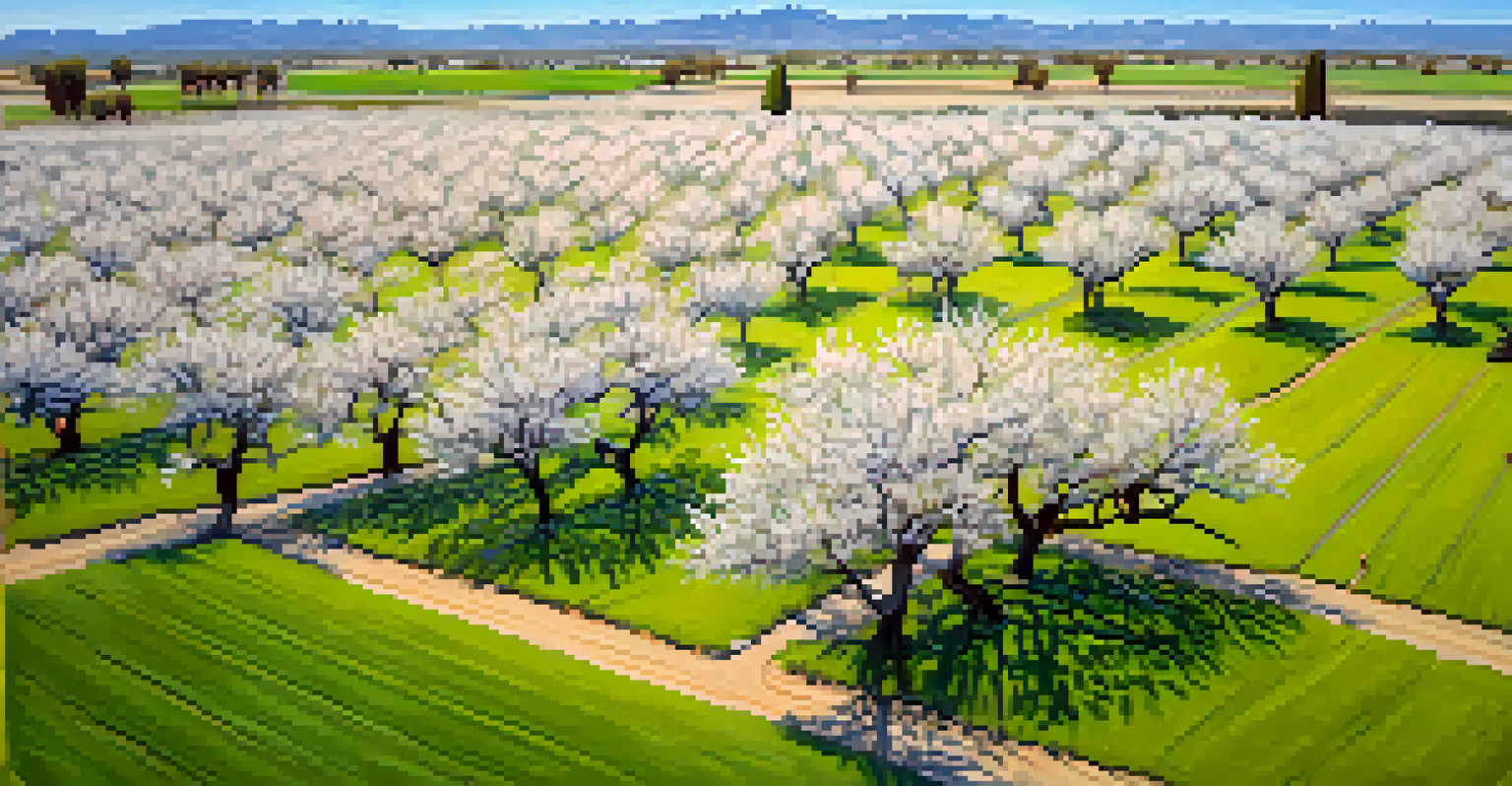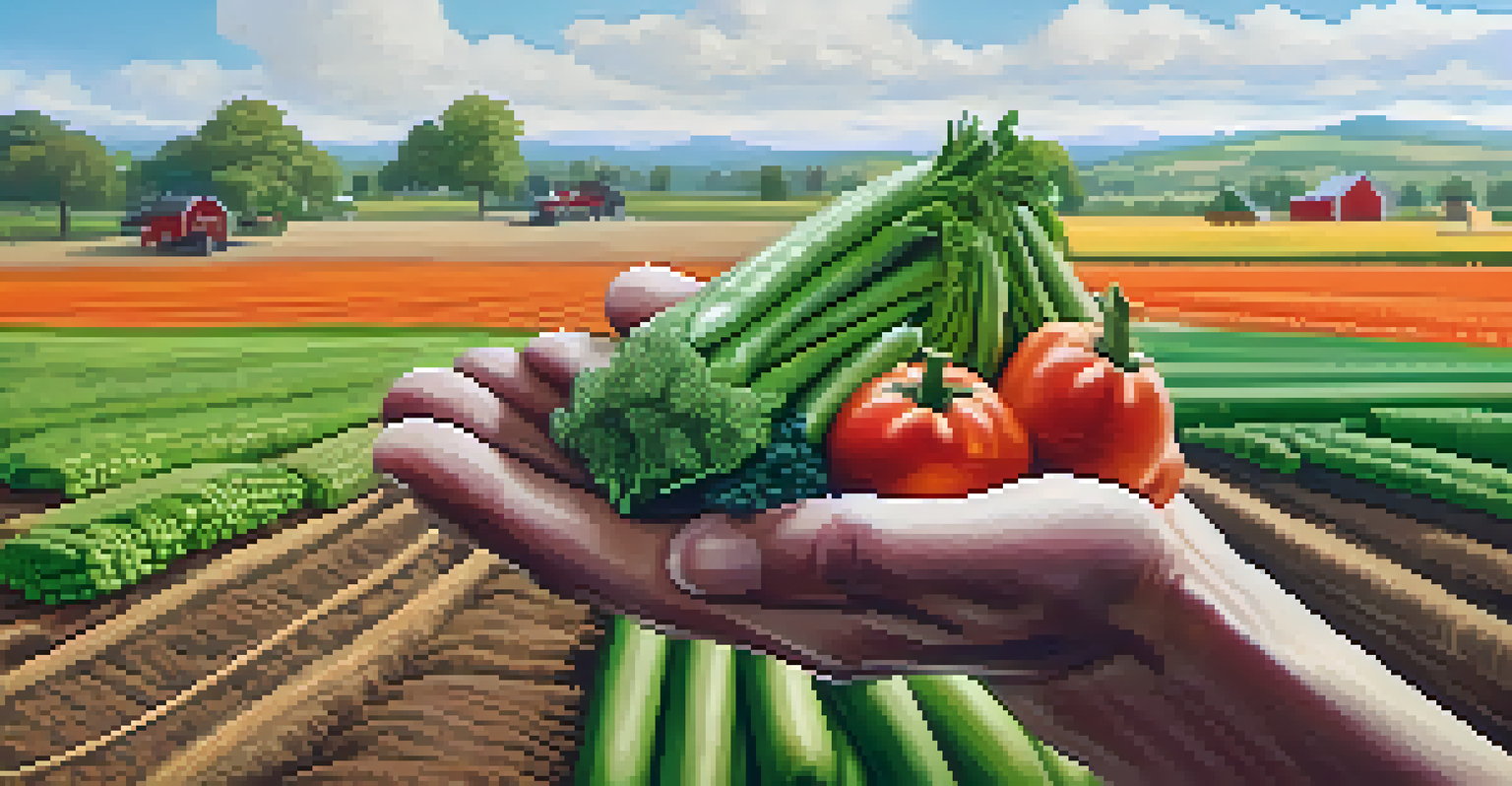Precision Agriculture: Data-Driven Farming in California

What is Precision Agriculture and Why It Matters
Precision agriculture refers to the use of technology and data to enhance farming practices. By applying information gathered from various sources, farmers can make informed decisions that optimize crop yields and reduce waste. This method focuses on managing variability in fields, allowing for more efficient use of resources.
The future of farming is not about the farm itself, but about the data that drives it.
In California, where agriculture is a vital part of the economy, precision farming offers significant benefits. The state's diverse climates and crops mean that tailored approaches can lead to better outcomes. For instance, using GPS technology helps farmers track field conditions and make adjustments specific to each section of land.
Ultimately, precision agriculture aims to make farming more sustainable and profitable. By leveraging data, farmers can not only boost productivity but also minimize the environmental impact of their practices, ensuring that the land remains fertile for future generations.
The Role of Technology in Precision Agriculture
Technology plays a pivotal role in the evolution of precision agriculture. Innovations such as drones, sensors, and satellite imagery enable farmers to monitor their crops in real-time. These tools provide invaluable data on soil moisture, nutrient levels, and pest activity, facilitating timely interventions.

For example, drones equipped with multispectral cameras can capture images that reveal the health of crops. This information allows farmers to identify issues early, reducing the need for chemical treatments and promoting healthier ecosystems. By integrating these technologies, farmers can optimize their inputs, saving both time and money.
Precision Agriculture Enhances Farming
By utilizing technology and data, farmers can optimize crop yields and reduce waste through informed decision-making.
Moreover, data analytics platforms now allow farmers to analyze vast amounts of information quickly. This helps in making predictive decisions, such as when to plant or harvest, based on weather patterns and soil conditions. The result? A more efficient farming operation that can adapt to changing circumstances.
Benefits of Data-Driven Decision Making in Farming
Data-driven decision making provides several benefits for farmers, primarily in enhancing productivity. By analyzing data collected from various sources, farmers can identify trends and patterns that inform their strategies. This leads to better crop management and ultimately higher yields.
Sustainability is no longer about doing less harm. It's about doing more good.
For instance, when farmers know the optimal times for planting based on historical weather data, they can ensure their crops are sown at the right moment. This proactive approach reduces the risk of crop failure and maximizes harvest potential. Additionally, it allows for smarter allocation of resources like water and fertilizers.
Furthermore, data-driven practices contribute to sustainability. By using data to apply inputs more precisely, farmers can significantly reduce waste and environmental impact. This not only benefits the planet but also aligns with the growing consumer demand for sustainable farming practices.
Challenges Facing Precision Agriculture in California
While precision agriculture offers numerous advantages, it’s not without its challenges. One major hurdle is the initial cost of implementing new technologies. For many farmers, especially smaller operations, the investment in drones, sensors, and software can be a significant barrier.
Additionally, the steep learning curve associated with new technologies can deter some farmers from adopting precision practices. They may struggle to integrate these tools into their traditional farming methods, leading to frustration and resistance. Education and training are crucial to overcoming these obstacles.
Technology Transforms Farming Practices
Innovations like drones and data analytics allow farmers to monitor crops in real-time, leading to more efficient resource use.
Moreover, data privacy concerns are increasingly relevant as farmers rely more on technology. Protecting sensitive information while still leveraging data for better farming practices poses a challenge. Developing strong data governance policies will be essential for fostering trust within the farming community.
Examples of Successful Precision Agriculture Practices
Several California farms are leading the way in precision agriculture, showcasing the potential of data-driven methods. For instance, a vineyard in Napa Valley uses sensors to monitor soil health and moisture levels, allowing for tailored irrigation practices. This not only conserves water but also enhances the quality of the grapes.
Another example can be found in almond orchards, where farmers deploy drones to assess crop health. By analyzing the data collected, they can target specific areas needing attention, reducing reliance on pesticides and improving overall yield. These success stories illustrate the tangible benefits of precision farming.
These examples highlight how precision agriculture can be adapted to various crops and conditions. As more farmers share their experiences and successes, the momentum for adopting these practices continues to grow, paving the way for a more sustainable future in California agriculture.
The Future of Precision Agriculture in California
Looking ahead, the future of precision agriculture in California appears promising. As technology continues to evolve, we can expect even greater advancements in data analytics and automation. This will make precision farming more accessible and efficient for farmers of all sizes.
Moreover, collaboration between tech companies and agricultural experts will likely lead to innovative solutions tailored to the unique challenges of California's diverse farming landscape. By working together, stakeholders can develop tools that enhance productivity while addressing environmental concerns.
Challenges in Adopting Precision Ag
The high cost of technology and data privacy concerns pose significant barriers for farmers looking to implement precision agriculture.
As more farmers embrace precision agriculture, we can anticipate a transformation in how food is produced. This shift will not only benefit the agricultural sector but also contribute to food security and sustainability for California and beyond.
Conclusion: Embracing the Data-Driven Farming Revolution
In conclusion, precision agriculture represents a significant shift in farming practices, particularly in California. By harnessing the power of technology and data, farmers can improve their operations and contribute to a more sustainable future. The benefits of this approach extend beyond individual farms, influencing the entire agricultural ecosystem.
As challenges arise, the importance of education and collaboration cannot be overstated. With continued support and investment in technology, farmers can overcome barriers and fully realize the potential of precision agriculture. The journey toward data-driven farming is not just a trend; it's a necessary evolution.

Ultimately, embracing precision agriculture will be key to meeting the demands of a growing population while safeguarding our natural resources. As farmers adapt to this new landscape, they will play a crucial role in shaping the future of agriculture in California and beyond.